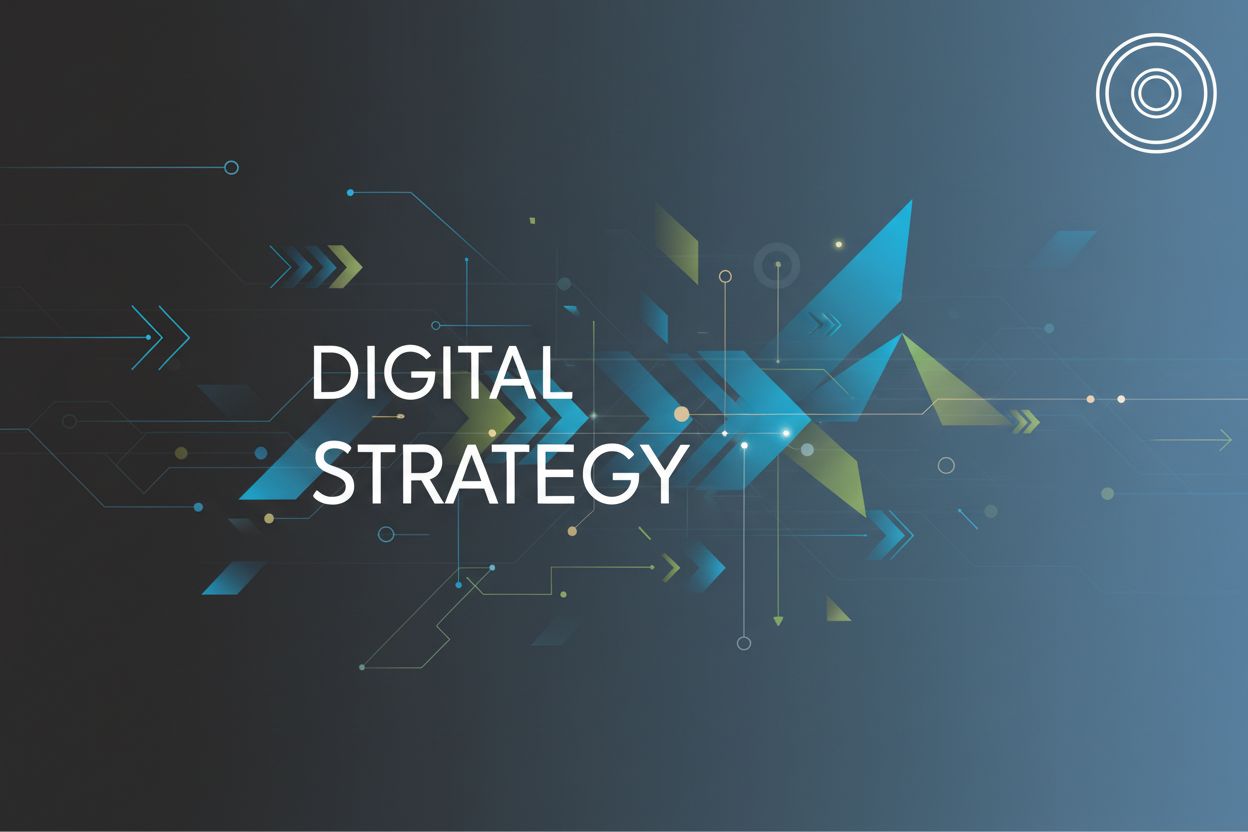The 7C Framework in Digital Marketing Explained
TL;DR
Introduction to the 7C Framework
Ever feel lost in the digital marketing jungle? The 7C framework is like a machete, hacking through the chaos. It's not perfect, but it gives ya a checklist.
- Structured approach: Helps organize your marketing efforts.
- Prioritization: Keeps you from chasing every shiny object. (This is a big one, stops you wasting time and money!)
- Relevant: Addresses the complexities of today's digital world.
Next up, let's dig into that first "C": Customer!
The 7 Cs Explained: A Detailed Breakdown
Alright, so, "Customer" – seems obvious, right? But trust me, it's way more than just knowing their age and gender. It's about crawling inside their head, figuring out what makes 'em tick. What keeps them up at night? What are their secret desires? Okay, maybe not that deep, but you get the idea.
Here's the deal: you gotta know your audience like you know your best friend's coffee order. It's about:
- Needs, behaviors, and preferences: Are they glued to TikTok, or do they prefer long-form blog posts? Do they value speed or quality? A 2023 study shows that this understanding has a direct impact on ROI.
- Detailed customer personas: Don't just say "millennial mom." Get specific. What's her job? What are her hobbies? What are her pain points?
- Customer-centric strategies: Everything you do should be focused on them. Think about what they need, not just what you want to sell.
It's really about putting yourself in their shoes, seeing the world from their perspective. And honestly, if you don't, you're just shouting into the void.
Let's say you're a healthcare provider. Instead of generic ads, you could create content addressing specific concerns:
- For busy moms, quick tips on healthy family meals.
- For seniors, guides on managing chronic conditions.
- For young adults, information on mental health resources.
Or consider a financial services company. They might tailor their messaging to different life stages:
- For young professionals, advice on paying off student loan debt.
- For families, guides on saving for college.
- For retirees, information on estate planning.
It's not rocket science, but it is about being thoughtful and intentional.
Okay, quick reality check. All this "knowing your customer" stuff can get a little creepy if you're not careful. Data privacy is a HUGE deal, and people are getting more and more aware of how their information is being used. So, be transparent, get consent, and don't be a data hoarder. Nobody likes that.
As exploring the 7C Framework of Digital Marketing says, keep your overall business goals aligned with your brand.
So, you've got a handle on your customer. What's next? Well, you gotta give them something to sink their teeth into. That's where content comes in, and that's what we'll be diving into next.
Content: What You're Actually Offering
Content is king, right? But it's not just about churning out blog posts. It's about creating stuff that actually matters to your audience. Think about what they're looking for, what problems they need solved, or what entertains them.
- Relevance and Value: Is your content answering questions, providing solutions, or offering entertainment? If it's just fluff, people will bounce.
- Format Diversity: Some people love videos, others prefer reading. Offer a mix – articles, infographics, videos, podcasts, webinars.
- Storytelling: People connect with stories. Use yours to build a relationship and showcase your brand's personality.
For example, a travel company could create destination guides, packing tips videos, or even a podcast interviewing locals. It's all about giving them something they can't get elsewhere.
Context: Setting the Scene
Context is about understanding the environment your customer is in and how your brand fits into that. It's not just about what you say, but when and where you say it.
- Platform Appropriateness: What works on Instagram might not fly on LinkedIn. Tailor your message to the platform.
- Timing and Trends: Are you jumping on a relevant trend or offering advice during a specific season or event?
- User Journey: Where is the customer in their buying process? Are they just browsing, or are they ready to buy? Your content should match their stage.
Think about a fashion brand. They might post outfit inspiration on Instagram, detailed product descriptions on their website, and customer testimonials on Facebook. Each platform and each stage of the journey needs a different approach.
Convenience: Making it Easy
In today's fast-paced world, convenience is king. If it's hard to find, hard to use, or hard to buy, people will just go somewhere else.
- User Experience (UX): Is your website easy to navigate? Is your checkout process smooth?
- Accessibility: Can people access your content and products easily, regardless of their device or abilities?
- Speed and Efficiency: Do you offer fast shipping, quick customer support, or easy ways to find information?
An online grocery store that offers same-day delivery, easy recipe integration, and a simple app interface is a great example of convenience in action.
Communication: The Two-Way Street
Communication isn't just broadcasting your message; it's about engaging in a conversation. It's about listening as much as talking.
- Responsiveness: How quickly do you respond to inquiries, comments, and feedback?
- Engagement: Are you actively participating in conversations, asking questions, and encouraging interaction?
- Clarity and Tone: Is your message clear, consistent, and appropriate for your audience?
A brand that actively responds to customer questions on social media, hosts Q&A sessions, and solicits feedback demonstrates strong communication.
Credibility: Building Trust
People buy from brands they trust. Credibility is all about proving you're reliable, knowledgeable, and honest.
- Social Proof: Reviews, testimonials, case studies, and user-generated content all build trust.
- Expertise: Showcase your knowledge through informative content, certifications, and industry recognition.
- Transparency: Be honest about your products, services, and business practices.
A financial advisor who publishes regular market analysis reports, displays client testimonials prominently, and clearly outlines their fees is building credibility. Consistent branding across all channels—logo, colors, messaging—reinforces this credibility, making your brand instantly recognizable and trustworthy.
Community: Fostering Belonging
Community is about creating a space where your customers feel connected to your brand and to each other. It's about building loyalty beyond just transactions.
- Engagement Platforms: Forums, social media groups, loyalty programs, or even in-person events can foster community.
- Shared Values: Connect with your audience on shared interests or values.
- Customer Advocacy: Empower your most loyal customers to become brand advocates.
A fitness brand that creates a private Facebook group for its members to share progress, tips, and support is building a strong community.
Preparing to Implement the 7C Framework
Before you dive headfirst into applying the 7C framework, it's smart to do a little prep work. Think of it like getting your tools ready before you start building something.
- Audit Your Current Efforts: Take a good, hard look at what you're already doing. What's working? What's not? Where are the gaps? This isn't about judgment; it's about understanding your starting point.
- Set Clear Goals: What do you want to achieve with your digital marketing? Be specific. Do you want more leads? Higher conversion rates? Better brand awareness? Having clear, measurable goals will guide your implementation of the 7Cs.
Once you've got a handle on your current situation and know where you want to go, you can start mapping out strategies for each "c."
Implementing the 7C Framework: A Step-by-Step Guide
Alright, so you've done an audit and have goals. Now, what's the plan? Time to map out strategies for each "c."
- Customer: How can you make their life easier? What are their biggest pain points, and how can your offerings solve them?
- Content: What kinda content they actually wanna see? What formats resonate best, and what topics are they searching for?
- Context: How can you relate to the world around them? How can you tailor your message to the platform and the customer's current situation?
- Convenience: How can you make it super easy for them to interact with your brand and make a purchase?
- Communication: How can you foster a two-way conversation? Are you listening and responding effectively?
- Credibility: What steps can you take to build trust and prove your expertise?
- Community: How can you bring your customers together and make them feel like they belong?
For instance, a financial firm might offer webinars on managing finances during a recession (Content & Context), make booking appointments super easy online (Convenience), and actively answer questions on social media (Communication). Next up: community.
Examples of Successful 7C Framework Implementation
Okay, so, you're thinking, does this 7C thing actually work? I get it. Let's look at some real-world examples—minus the made-up company names, cause those are just annoying, right?
- Healthcare: A clinic uses targeted content (Content) to address specific patient concerns based on their demographics and health interests (Customer). They make booking appointments easy online (Convenience) and share patient success stories (Credibility).
- eCommerce: An online retailer personalizes the shopping experience, showing product recommendations based on your purchase history and browsing behavior (Customer & Content). Their website is easy to navigate (Convenience), and they have a robust review system (Credibility). They might also have a Facebook group for loyal customers (Community).
- Finance: Financial services firms providing tailored advice based on life stage (Customer & Content) makes way more sense than generic tips, right? They offer easy online consultations (Convenience), publish insightful market analysis (Credibility), and host webinars to answer client questions (Communication).
It's all about relevance, ya know? Make it useful, make it personal. Now, how do you measure all this? We'll get to that next.
Common Pitfalls to Avoid
Okay, so, about those pitfalls... You can have the shiniest strategy, but mess these up, and it's toast. I've seen it happen.
- Ignoring Customer Feedback: Seriously, listen to what folks are saying. Set up surveys, stalk social media (ethically, of course!), and actually read the comments. Use that goldmine of info to tweak your approach; otherwise, you're flying blind. This directly impacts your understanding of the Customer and Communication.
- Lack of Consistent Branding: This one drives me nuts. Make sure your logo, colors, and messaging are the same across every channel. A confusing brand is a forgettable brand. This is crucial for Credibility and Communication, as it makes your brand instantly recognizable and trustworthy.
- Overlooking Convenience: If your website is a maze or your checkout process is a nightmare, people will leave. This directly hurts your Convenience C.
- One-Way Communication: Just pushing out messages without listening or responding is a recipe for disaster. This fails your Communication C.
Next up: How to fix this mess!
The Future of the 7C Framework
The future's comin' fast, right? So can the 7C's keep up? I think so, but it's gonna need some tweaks, ya know?
- ai integration: ai could make the "Customer" C way more effective, predicting needs before they even surface. (8 Ways AI is Revolutionizing Customer Insights and ...) Think hyper-personalization on steroids. It can also help tailor Content at scale and improve Communication by automating responses.
- ar and vr: Imagine "Content" that's fully immersive. Retailers could let you "try on" clothes virtually. Wild, huh? This can also enhance Convenience by allowing virtual product exploration.
- Innovation is key: Gotta stay agile. What works today might be old news tomorrow. Like, remember QR codes a decade ago? We need to constantly evaluate how new tech impacts all the Cs, not just the obvious ones.
And hey, who knows what's next? Maybe the 8C's are around the corner.
Conclusion
Okay, so, we’ve ran through the 7 c's. what now?
- It's a wrap!: You've got a framework, now use it!. It's not gonna solve all your problems but it will help you think strategically, you know? By covering all seven Cs, you get a much clearer picture of how to drive success.
- Holistic is key: Don't look at these in isolation. They all work together, like a digital marketing Voltron.
- Go forth and conquer: Implement this stuff, see what happens! The 7 c's can really help you drive success.




